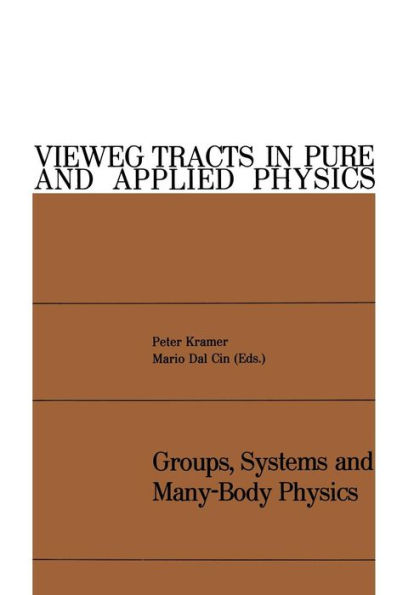Groups, Systems and Many-Body Physics
The authors of the present book share the view that groups and semigroups playa fundamental role in the structure of the complex systems which they are studying. A serious effort was made to implement this point of view by presenting the fundamental concepts pertaining to groups and semigroups before going into the various fields of application. The first two chapters are written in this spirit. The following seven chapters deal with groups in relation to specific systems and lead from basic notions to high-level applications. The systems under study are in all cases characterized by a high degree of complexity as found in the physics of many degrees of freedom and in the theory of automata and systems. In 1977 the authors from the University of Tiibingen (M. Dal Cin, G. John, P. Kramer, A. Rieckers, K. Scheerer and H. Stumpf) organized an International Summer School on Groups and Many-Body Physics. The lectures presented at this School dealt specifically with this interplay of groups and complex systems. The contributions of this book cover the fields which were treated in a condensed form at the Summer School.
1118003982
Groups, Systems and Many-Body Physics
The authors of the present book share the view that groups and semigroups playa fundamental role in the structure of the complex systems which they are studying. A serious effort was made to implement this point of view by presenting the fundamental concepts pertaining to groups and semigroups before going into the various fields of application. The first two chapters are written in this spirit. The following seven chapters deal with groups in relation to specific systems and lead from basic notions to high-level applications. The systems under study are in all cases characterized by a high degree of complexity as found in the physics of many degrees of freedom and in the theory of automata and systems. In 1977 the authors from the University of Tiibingen (M. Dal Cin, G. John, P. Kramer, A. Rieckers, K. Scheerer and H. Stumpf) organized an International Summer School on Groups and Many-Body Physics. The lectures presented at this School dealt specifically with this interplay of groups and complex systems. The contributions of this book cover the fields which were treated in a condensed form at the Summer School.
54.99
Out Of Stock
5
1

Groups, Systems and Many-Body Physics
412
Groups, Systems and Many-Body Physics
412Paperback(Softcover reprint of the original 1st ed. 1980)
$54.99
Related collections and offers
54.99
Out Of Stock

Product Details
| ISBN-13: | 9783528084448 |
|---|---|
| Publisher: | Vieweg+Teubner Verlag |
| Publication date: | 01/01/1980 |
| Series: | Vieweg tracts in pure and applied physics , #4 |
| Edition description: | Softcover reprint of the original 1st ed. 1980 |
| Pages: | 412 |
| Product dimensions: | 6.69(w) x 9.61(h) x 0.03(d) |
From the B&N Reads Blog
